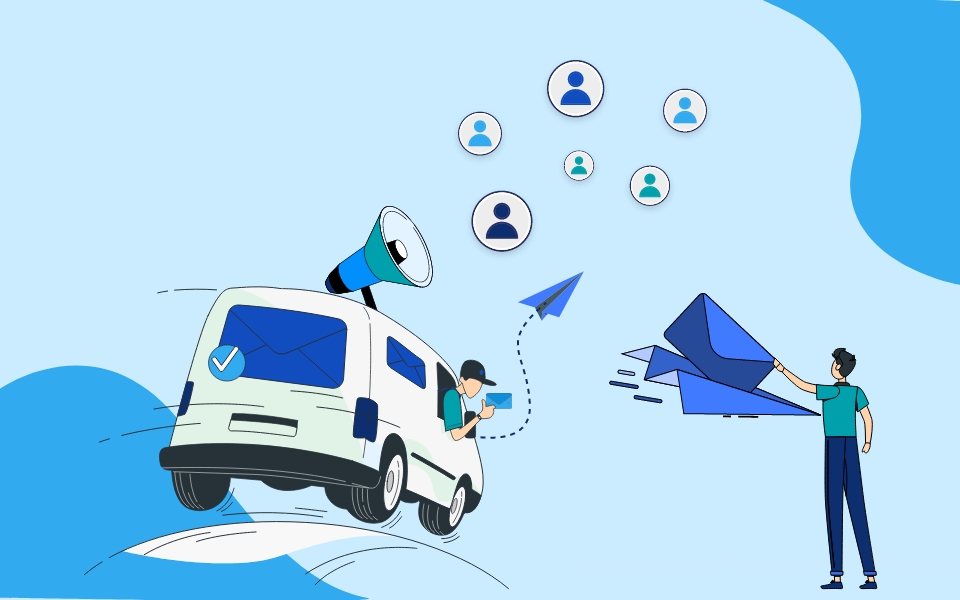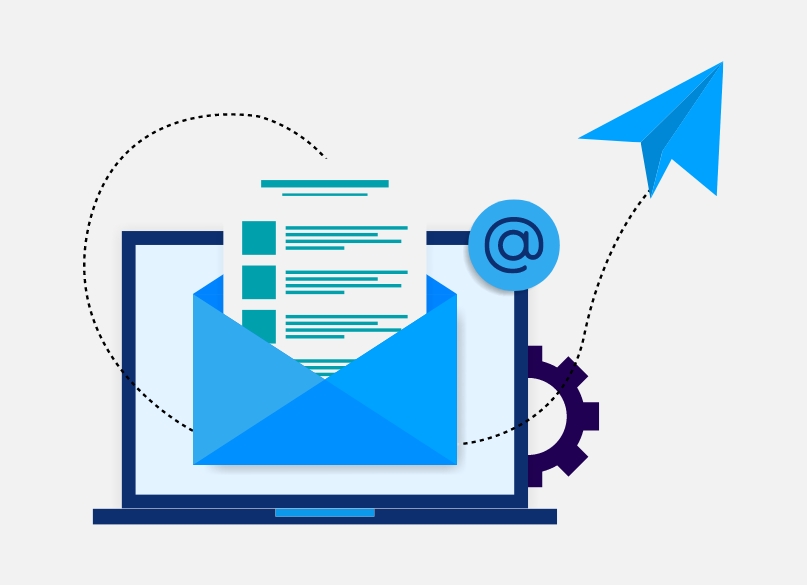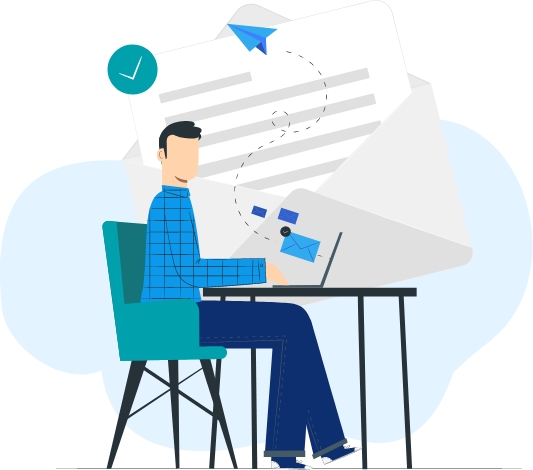Subscribe to Our Newsletter
Stay updated with the latest tips and strategies. Get additional discounts and alerts on offers.

Remember, while cold emailing, there has to be a genuine reason to reach out to them. Therefore, you can start by setting the objectives of your campaign. But ‘why choose cold emailing,’ you ask? Cold email marketing is professional, cost-effective, easily scalable, and not as intrusive as unsolicited phone calls. A study by Barilliance—an omnichannel personalization platform—indicated that cold email outreach can help you achieve an overall ROI of 3800% when executed properly.


Such databases can help you gather qualified B2B leads that will most likely convert into loyal customers. With a contact database, you can begin planning your cold email campaigns. However, if you plan to build your list, remember to collect data from credible and trustworthy sources and save the email addresses in a .csv file. Use the email verification tool to validate the emails before adding them to your email list.
Once you have an email contact list, start segmenting your audience, as it will aid in writing curated email content. Prepare a professional yet enticing sales pitch in your cold email that will resonate with your recipients. The email should be short, clear, and contain personalized elements. Craft an email with a solid call-to-action and eye-catching subject lines. A well-constructed cold email upholding the company’s values can go a long way.
While writing the copy, you can include images and videos and ensure the message is clear, as it can otherwise end up in the spam box. Use ready-made email templates to keep consistency and efficiency. Finding a suitable industry-based email template can aid you in improving your reply rate. We recommend you send up to only three follow-up emails timed one or two weeks apart. How you begin your cold email is also vital to the recipient’s action; remember to have a strong intro line.;

It is essential to test out everything from the email body to the email signature to improve the performance of your campaign. Check for errors in spelling, grammar, spam trigger words, clickable links, clear calls to action, and a professional email signature. The insights collected from the A/B test aid in analyzing and optimizing the campaign’s performance. Once the campaign is launched, invest in a powerful analytical tool such as ReachEngine that will allow you to analyze your campaigns more quickly and accurately.
Follow-up emails are sent to a recipient you have contacted before. The main aim of sending follow emails is to build relationships with prospective customers. Since you are trying to reach out to B2B professionals, they might occasionally check their emails due to time constraints. First emails may get lost in the inbox due to prospects’ busy schedules or tough competition in the inbox. Only a few prospects feel convinced to reach out to you after the first email, and this is where you send a follow-up email with more information about your products or services.
Business day 1: First cold email
Business day 4: Follow-up email 1 – Informative resource on the product or service, such as case studies or ebooks.
Business day 8: Follow-up email 2 – A demo on how your products or services can solve their pain point
Business day 12: Follow-up email 3 – The last call-to-action.

Ideal customer profile: ICP helps you outline your prospective client's basic and essential criteria for their needs and expectations. This usually differs depending on the industry, niche, or product the company offers.

Buyer persona: Buyer's persona is beneficial to identify particular attributes that define your target audience. This can include factors such as age, job title, industry, company, experience, etc.
Email list optimization: These features allow marketers to import, manage, and verify the email addresses they collect.
Automation: Automation features are designed to send ideally timed follow-up emails. All you have to do is schedule your emails, and once they are sent, it will detect any reply or bounce you receive.
Personalization features: Most email marketing software and tools come with features that help create curated cold emails for targeted prospects.
Collaboration: This feature allows the sales and marketing team or even other teams of an organization to work in sync with each other. It gives the teams a level of access and workflow.
Analytics: Analytics is a common feature available on most email marketing tools that give you real-time statistics and actionable insights.
To ensure a cold marketing campaign achieves the set objectives and goals, choose the right metric to track your campaign. By monitoring the metrics given below, a marketer can understand the performance of different subject lines, email content, and calls-to-action and will help choose what works the best with your cold email. This way, you can create successful and responsive cold emails. The email marketing metrics that must be taken into consideration for cold emails are:

Deliverability rate: This metric defines the rate at which the email is successfully sent to the target audience.

Bounce rate: This metric refers to the percentage of recipients that did not receive your emails because of their mail servers. Based on GetResponse's email marketing benchmarks, the average email bounce rate is 2.76%.

Open rate: This metric shows the number of people that have opened the cold email. This way, you can get an idea of your subject line's effectiveness. The same study proved that the reasonable open rate for cold emails is 19.66%. However, this can differ depending on the industry.

Click-through rate: This metric signifies the recipient has clicked on the call-to-action (CTA) or links added inside the cold emails. The average email click-through rate is 2.02%.

Response rate: This metric accounts for the number of recipients that responds to your cold emails. At the same time, the average cold email response rate is around 8%, according to GetResponse.

Spam rate: This metric showcases the number of recipients that add your emails to the spam folder. The study also noted that the average email spam rate is 0.01%.
The subject lines are the first thing your contact sees when opening their inbox. Therefore, it calls for more time and effort to create an eye-catching subject line. You can personalize your subject line with the recipient’s activity, name, company, job title, or even the pain points they face.
Do not give away the critical information in your subject line; only add the key points of interest.
It is also vital to keep the subject line within 50 characters, with a maximum word count of 6–10 words.
Avoid using misleading or clickbait subject lines. Make them credible and show some value.
The subject line must be enticing and appealing to the target audience.
Add offers, sales, or discounts tailored to the recipient to increase your open rates.
Ensure there are no grammatical errors, and proofread your subject line.
Avoid extra punctuation and all-caps writing; include only the right emojis in the subject line.

Customer testimonials

Number of customers

Product or service reviews

User-generated content

Press mentions

Awards
How many CTAs do I add in the cold email?
We suggest adding only one or two CTAs in the email.
Where should the CTA be placed?
CTAs are usually added towards the end of the email just above your email signature and social media handles.
How should the CTA be designed?
Design the CTA like a button, hyperlink it to the page, and make sure it is evident.
Show Some Love!
Subscribe to Our Newsletter
Stay updated with the latest tips and strategies. Get additional discounts and alerts on offers.
Related Articles
Subscribe to Newsletter
Stay up to date with the latest marketing, sales, and service tips and news.
Enter Your Details
